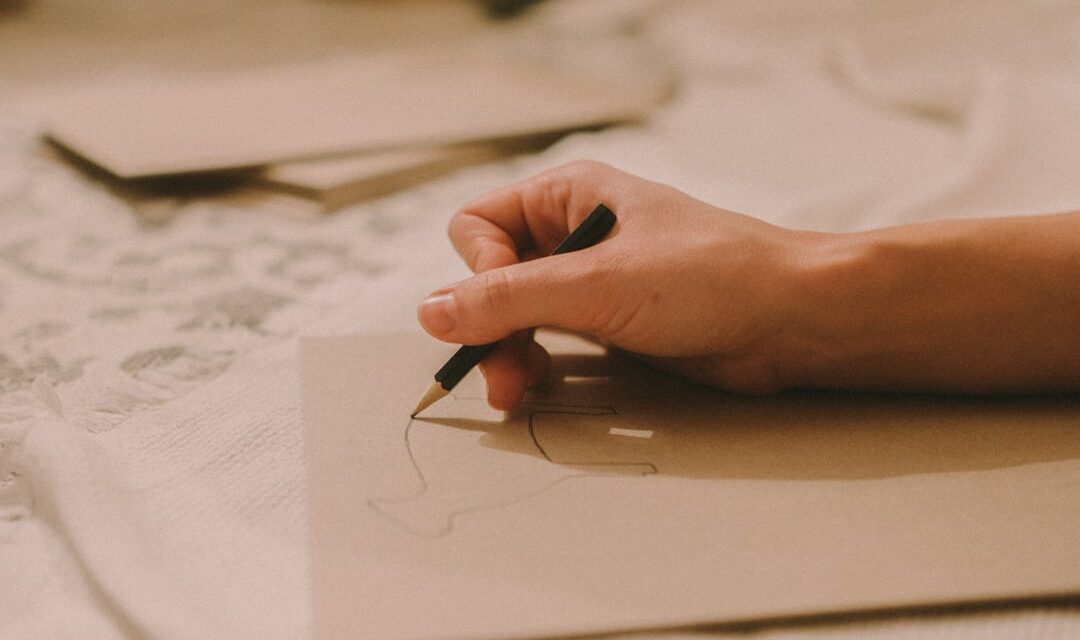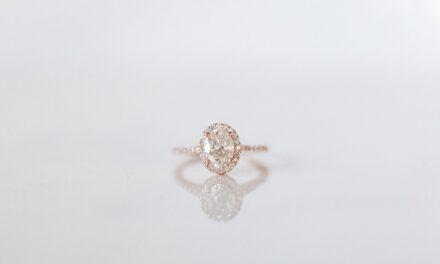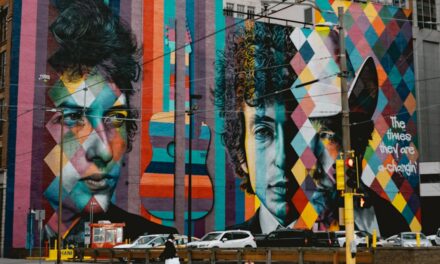Contour rivalry is a fascinating phenomenon that occurs within the realm of visual perception, particularly in the context of art and design. It refers to the way in which our brains interpret and respond to competing visual stimuli, especially when these stimuli are presented in a manner that creates ambiguity or duality. In essence, contour rivalry arises when two distinct shapes or outlines are perceived simultaneously, leading to a fluctuating perception where one contour may dominate our attention at any given moment.
This interplay between competing forms can evoke a sense of movement and dynamism, challenging the viewer’s understanding of space and form. The phenomenon is not merely a trick of the eye; it engages deeper cognitive processes that reveal how we construct meaning from visual information. The implications of contour rivalry extend beyond mere aesthetics; they touch upon fundamental questions about perception and reality.
Artists and designers have long been intrigued by how the human mind navigates conflicting visual cues, often using this knowledge to create works that provoke thought and engagement. By manipulating contours and outlines, artists can create pieces that invite viewers to question their perceptions, leading to a richer experience of the artwork. This interplay between perception and artistic intention makes contour rivalry a compelling subject for both artists and art historians, as it encapsulates the complex relationship between observer and observed.
Summary
- Contour rivalry is a technique in art where the viewer’s perception is manipulated by the use of contrasting lines and shapes.
- The history of contour rivalry dates back to the early 20th century, with artists like Marcel Duchamp and Salvador Dali experimenting with the technique.
- To create contour rivalry, artists can use techniques such as overlapping lines, contrasting colours, and varying line weights to create visual ambiguity.
- Materials needed for contour rivalry include paper, pencils, pens, markers, and other drawing tools that allow for precise line work and contrast.
- Techniques and tips for contour rivalry include experimenting with different line weights, using contrasting colours, and paying attention to the placement of lines to create visual tension.
The History of Contour Rivalry
The concept of contour rivalry has roots in the study of visual perception that dates back centuries, but it gained significant traction in the 19th century with the advent of modern psychology. Early theorists such as Hermann von Helmholtz began to explore how the brain interprets visual stimuli, laying the groundwork for understanding phenomena like contour rivalry. As artists began to experiment with optical illusions and ambiguous forms, they inadvertently contributed to the discourse surrounding this intriguing aspect of perception.
The works of artists such as M.Escher and Pablo Picasso exemplify how contour rivalry can be harnessed to create complex visual narratives that challenge traditional notions of perspective and form. In the 20th century, the exploration of contour rivalry became more pronounced with the rise of movements such as Cubism and Surrealism. Artists sought to break free from conventional representation, embracing ambiguity and multiplicity in their works.
The interplay of contours became a central theme, as artists like Juan Gris and Salvador Dalí employed techniques that encouraged viewers to engage with their art on multiple levels. This historical evolution reflects a broader cultural shift towards questioning established norms in art and perception, ultimately paving the way for contemporary explorations of contour rivalry in various artistic practices.
How to Create Contour Rivalry

Creating contour rivalry in art involves a deliberate manipulation of shapes and outlines to evoke a sense of duality or conflict within a composition. Artists can achieve this by juxtaposing contrasting forms or employing overlapping elements that challenge the viewer’s perception. One effective method is to use negative space strategically; by leaving certain areas blank or ambiguous, artists can create tension between what is seen and what is not.
This approach encourages viewers to actively engage with the artwork, as they must navigate the competing contours to derive meaning from the piece. Another technique for creating contour rivalry is through colour contrast and tonal variation. By using colours that are visually striking against one another, artists can enhance the perception of depth and dimensionality within their work.
For instance, placing a dark shape against a light background can create an optical illusion where the contours seem to shift and change as the viewer’s gaze moves across the canvas. Additionally, incorporating movement into the composition—whether through dynamic lines or rhythmic patterns—can further amplify the sense of rivalry between contours, inviting viewers to explore the artwork from different angles and perspectives.
Materials Needed for Contour Rivalry
To effectively create contour rivalry in art, artists require a variety of materials that facilitate experimentation with shapes, colours, and textures. Traditional mediums such as paint, charcoal, and ink are commonly used, as they allow for precise control over line quality and tonal variation. Acrylics and watercolours are particularly versatile, enabling artists to layer colours and create depth while maintaining clarity in their contours.
Additionally, mixed media approaches can be employed, incorporating materials like paper cutouts or fabric to introduce texture and complexity into the composition. Digital tools have also become increasingly popular for exploring contour rivalry in contemporary art. Software such as Adobe Illustrator or Procreate allows artists to manipulate shapes with precision, experimenting with different configurations and colour schemes without the constraints of traditional mediums.
The ability to easily undo or modify elements encourages a playful exploration of contours, making it easier for artists to discover unexpected relationships between forms. Ultimately, whether working with traditional or digital materials, the key lies in fostering an environment that encourages experimentation and innovation in order to fully realise the potential of contour rivalry.
Techniques and Tips for Contour Rivalry
When delving into contour rivalry, several techniques can enhance an artist’s ability to create compelling compositions that engage viewers on multiple levels. One effective approach is to employ repetition and variation within a series of shapes or lines. By repeating certain contours while altering others slightly—whether through size, orientation, or colour—artists can create a rhythm that draws the eye across the artwork.
This technique not only establishes a sense of movement but also invites viewers to explore the nuances within each contour, fostering a deeper connection with the piece. Another valuable tip is to consider the viewer’s perspective when designing compositions that utilise contour rivalry. Artists should be mindful of how different angles or distances can alter perception; what may appear as one shape from afar could transform into another upon closer inspection.
Incorporating elements that encourage movement—such as diagonal lines or spirals—can guide viewers’ eyes through the artwork, enhancing their experience of shifting contours. Additionally, artists should not shy away from embracing ambiguity; allowing for multiple interpretations can enrich the viewer’s engagement with the piece, making contour rivalry an even more powerful tool for artistic expression.
Famous Artists who Used Contour Rivalry

Throughout art history, numerous renowned artists have harnessed the power of contour rivalry to create thought-provoking works that challenge viewers’ perceptions. One notable figure is M.Escher, whose intricate designs often play with spatial relationships and optical illusions. Escher’s ability to manipulate contours creates a sense of movement and transformation within his pieces, inviting viewers to question their understanding of reality.
His work exemplifies how contour rivalry can be used not only for aesthetic purposes but also as a means of exploring deeper philosophical concepts related to perception and existence. Another influential artist who embraced contour rivalry is Pablo Picasso, particularly during his Cubist phase. Picasso’s innovative approach involved breaking down forms into geometric shapes and reassembling them in ways that defied traditional representation.
This fragmentation creates a dynamic interplay between competing contours, encouraging viewers to engage with multiple perspectives simultaneously. By challenging conventional notions of space and form, Picasso’s work exemplifies how contour rivalry can serve as a powerful tool for artistic exploration and expression.
The Impact of Contour Rivalry on Art
The impact of contour rivalry on art extends far beyond individual works; it has influenced entire movements and reshaped our understanding of visual perception. By challenging viewers’ expectations and encouraging active engagement with artworks, contour rivalry has become a vital aspect of contemporary artistic practice. Artists who embrace this phenomenon often find themselves at the forefront of innovation, pushing boundaries and redefining what art can be.
The ability to evoke multiple interpretations through competing contours fosters a dialogue between artist and viewer that transcends traditional boundaries. Moreover, contour rivalry has implications for broader cultural conversations about perception and reality. As artists continue to explore this phenomenon, they contribute to an ongoing discourse about how we interpret visual information in an increasingly complex world.
The interplay between competing shapes serves as a metaphor for navigating ambiguity in our lives; just as we must reconcile conflicting visual cues in art, we often face similar challenges in our daily experiences. In this way, contour rivalry not only enriches artistic expression but also invites us to reflect on our own perceptions and understandings of reality.
Exploring Contour Rivalry in Contemporary Art
In contemporary art, contour rivalry remains a vibrant area of exploration for artists seeking to engage with themes of perception, identity, and reality. Many contemporary practitioners draw inspiration from historical precedents while infusing their work with modern sensibilities and technologies. For instance, digital artists often utilise software tools to create intricate compositions that play with contours in innovative ways, blurring the lines between traditional art forms and digital media.
This fusion allows for new possibilities in exploring how contours can shift and change based on viewer interaction. Furthermore, contemporary installations frequently incorporate elements of contour rivalry by inviting audience participation or utilising immersive environments. Artists may design spaces where viewers must navigate through competing shapes or projections that challenge their perceptions of space and form.
This interactive approach not only enhances engagement but also underscores the idea that perception is an active process shaped by individual experiences. As contemporary artists continue to push boundaries and experiment with contour rivalry, they contribute to an evolving dialogue about how we perceive art—and ultimately, how we perceive our world.
For those intrigued by the exploration of unique art techniques such as Contour Rivalry, a deeper appreciation of individual artists’ styles and contributions can further enhance understanding. A recommended read is An Introduction to the Artist Vincent van Gogh, which provides insight into the life and works of one of the most influential figures in the history of Western art. Van Gogh’s bold and dramatic brush strokes, a hallmark of his expressive technique, can be seen as a precursor to various modern art movements, offering a fascinating contrast to the more defined lines seen in Contour Rivalry.




